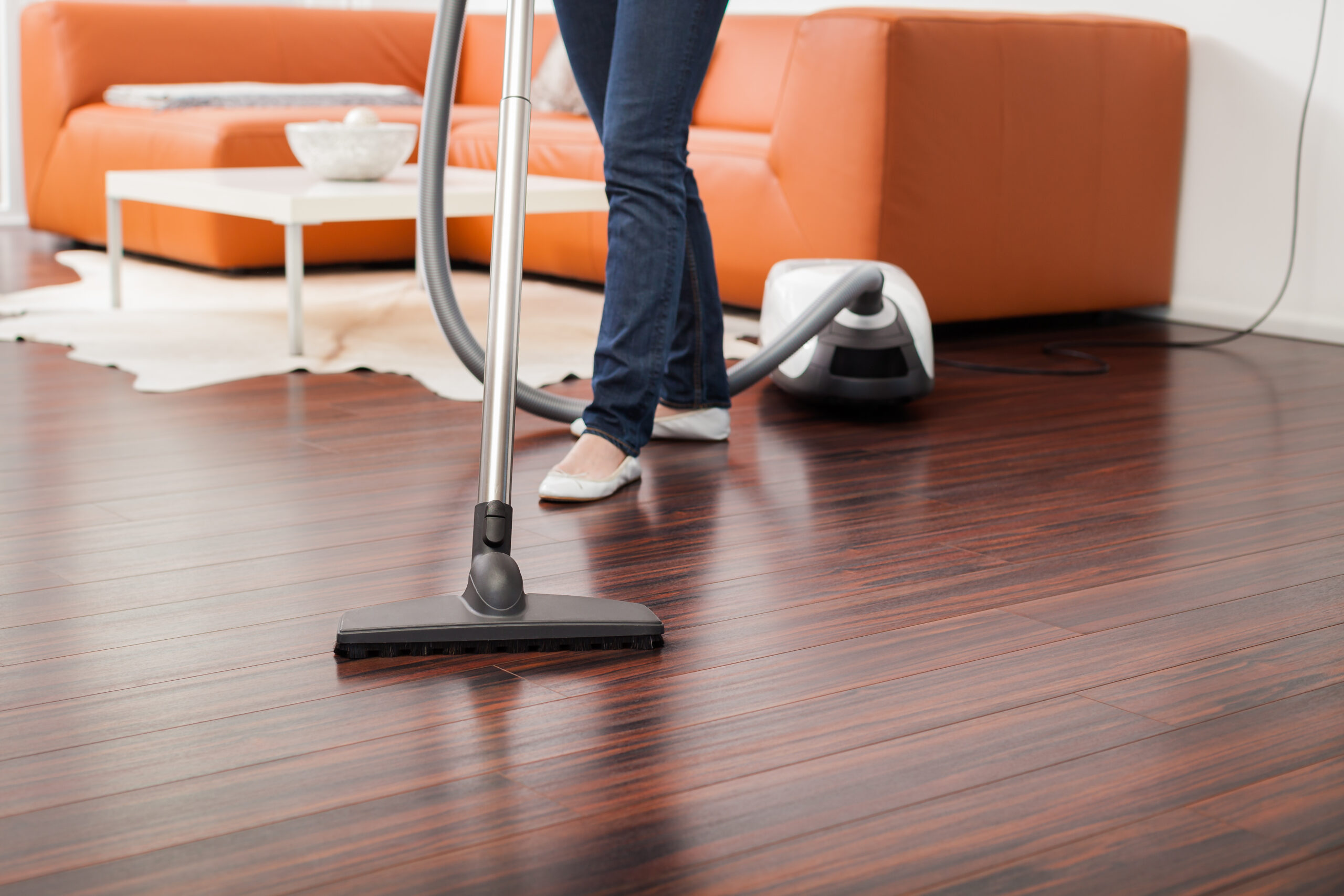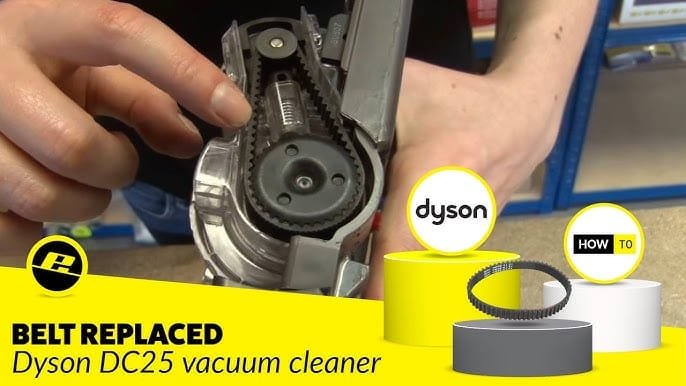Vacuum belts wear out over time. They need regular checking and replacing.
A vacuum cleaner is a household essential, ensuring our living spaces stay clean and dust-free. But like any machine, it requires maintenance to perform optimally. One key component that often goes unnoticed is the vacuum belt. This small yet crucial part drives the brush roll, helping to pick up dirt and debris.
When the belt wears down, it can significantly impact the vacuum’s efficiency. Recognizing the signs that your vacuum belt needs changing can save you time and ensure your cleaner works at its best. In this post, we’ll highlight the tell-tale signs of a worn-out vacuum belt and guide you on when to replace it for optimal performance.
Signs Of Wear And Tear
As with any mechanical device, vacuum cleaners wear out over time. Identifying early signs of wear and tear on your vacuum belt can save you from costly repairs and ensure your vacuum performs optimally. But how do you know when it’s time to replace the belt? Here are some clear indicators.
Visible Cracks
One of the most obvious signs of a worn-out vacuum belt is visible cracks. These can appear as tiny splits or larger breaks along the belt. If you see any cracks, it’s time to replace the belt.
During a recent cleaning session, I noticed my vacuum wasn’t picking up dirt as effectively. Upon inspection, I found several cracks on the belt. Replacing it made a world of difference.
Take a moment to check your vacuum belt regularly. It only takes a few minutes and can prevent bigger issues down the line.
Loss Of Tension
Another sign of wear and tear is a loss of tension in the belt. A loose belt won’t turn the vacuum’s brush roll efficiently, leading to poor performance.
If you hear a slipping noise or notice the brush roll isn’t spinning as fast as usual, the belt might have stretched out. This loss of tension means it’s no longer gripping the pulleys tightly.
When I experienced this with my vacuum, replacing the belt restored its original performance. It was a simple fix that saved me from buying a new vacuum.
Have you checked your vacuum belt lately? A quick inspection can save you time and money, ensuring your vacuum runs smoothly.

Credit: homeworkshousecleaning.com
Reduced Suction Power
Reduced suction power can be a clear sign that your vacuum belt needs replacement. As the belt wears out, it fails to grip the vacuum roller effectively. This can lead to a noticeable drop in performance. Let’s explore some specific symptoms of reduced suction power in detail.
Decreased Performance
If your vacuum seems less powerful, a worn belt might be the cause. The belt drives the vacuum’s brush roller. When the belt is loose or damaged, the roller moves slower. This reduces the vacuum’s ability to pick up dirt and debris. You might notice that your floors aren’t as clean. Pay attention to this change.
Frequent Clogs
Clogs can become more common with a worn belt. The vacuum’s brush roller can’t spin effectively, leading to dirt buildup. This makes the vacuum prone to clogging. Frequent clogs can be frustrating and time-consuming. Cleaning the vacuum becomes a constant chore. A new belt can help reduce these issues. Keep an eye on the frequency of clogs.
Unusual Noises
Vacuum cleaners sometimes make strange sounds. These noises can signal a problem. One common issue is a worn-out vacuum belt. This part is crucial for the vacuum’s operation. Listening for unusual noises can help you catch problems early. Here are some sounds to listen for:
Squeaking Sounds
Squeaking sounds often mean the vacuum belt is loose. A loose belt can slip while the vacuum is running. This slipping causes a squeaking noise. You might hear this when the vacuum first starts. Squeaking can also happen during use. If you hear squeaking, check the belt.
Grinding Noises
Grinding noises are a sign of serious issues. A broken or misaligned belt can cause grinding. This noise is harsher than squeaking. It can damage other parts of your vacuum. Turn off the vacuum if you hear grinding. Inspect the belt and replace it if needed.

Credit: www.cnet.com
Burning Smell
Noticing a burning smell from your vacuum? It often means the vacuum belt needs replacing. This smell indicates the belt is worn out or broken.
### Burning SmellA burning smell coming from your vacuum cleaner can be alarming. If you notice this, it might be a sign that your vacuum belt needs replacing. Acting quickly can prevent further damage.###Overheating
One reason for the burning smell is that the vacuum motor is overheating. This can happen when the belt is worn out and slipping. The friction from the slipping belt generates heat, which can cause a burning odor.###Rubber Odor
Another sign is a strong rubber odor. As the vacuum belt wears down, it can start to fray and burn. This burning rubber smell is a clear indicator that the belt needs changing.### Personal ExperienceI once ignored a burning smell from my vacuum, thinking it was nothing serious. That minor issue turned into a costly repair. Don’t make the same mistake.Have you ever noticed a burning smell coming from your vacuum? Don’t wait. Check the belt immediately. Your quick action can save you time and money.Inspection Tips
Regularly inspecting your vacuum belt can prevent costly repairs. Knowing the signs of wear helps maintain your vacuum’s efficiency. Here are some key inspection tips to keep your vacuum running smoothly.
Visual Check
Start by unplugging your vacuum. Look at the belt for cracks or fraying. A worn belt might appear stretched out. A damaged belt needs immediate replacement. Check the area around the belt for debris. Debris can cause the belt to wear out faster.
Tension Test
Next, test the belt’s tension. Press down on the belt lightly. It should feel firm, not loose. A loose belt can slip off during use. If the belt moves too easily, it’s time for a new one. Proper tension ensures optimal vacuum performance.
Choosing The Right Belt
Choosing the right vacuum belt is crucial for your vacuum’s performance. It ensures your vacuum works efficiently and lasts longer. But how do you know which belt to choose? Let’s explore some key points.
Compatible Models
First, check your vacuum’s model number. Not all belts fit all vacuums. Look for belts that specifically mention compatibility with your model. This ensures a perfect fit and smooth operation.
Quality Brands
Quality matters when selecting a vacuum belt. Opt for well-known brands. They use durable materials that last longer. Brands like Hoover, Bissell, and Dyson are reputable. They offer reliable belts that enhance your vacuum’s performance. Investing in a good brand saves you money in the long run.
Replacement Steps
Replacing the vacuum belt can be a simple task. Follow these steps to ensure your vacuum runs smoothly. Let’s break down the process into manageable parts.
Preparation
First, unplug your vacuum. Safety is crucial. Next, gather your tools. You will need a screwdriver and the replacement belt. Check your vacuum’s manual for the correct belt type.
Lay your vacuum on its back. Locate the screws that hold the bottom plate. Remove the screws and set them aside. Carefully lift off the bottom plate.
Installation
Remove the old belt. It may be broken or stretched out. Take note of how it was positioned. Slide the new belt onto the motor shaft. Then, loop it around the brush roll.
Reinsert the brush roll into its slots. Make sure the belt is aligned correctly. Replace the bottom plate. Screw it back in tightly. Stand your vacuum upright. Plug it back in and test.
Your vacuum should now run smoothly. Regular maintenance keeps your vacuum effective. Replace belts as needed to maintain performance.

Credit: www.instagram.com
Maintenance Tips
Maintaining your vacuum cleaner ensures its longevity and efficiency. Regular care prevents common issues and keeps it running smoothly. Below, find essential maintenance tips to keep your vacuum in top shape.
Regular Cleaning
Clean your vacuum regularly to avoid clogs. Remove any dust and debris from the brush roll. Ensure the dustbin is emptied after each use. This prevents overloading and maintains suction power. Wipe the exterior to keep it clean and dust-free. A clean vacuum works better and lasts longer.
Periodic Checks
Inspect your vacuum periodically for any signs of wear. Check the belt for cracks or fraying. Replace it if you notice any damage. Examine the filters and clean or replace them as needed. Look at the hose for blockages or tears. Regular checks help catch problems early, preventing bigger issues.
Frequently Asked Questions
How Do You Know If You Need A New Vacuum Belt?
A new vacuum belt is needed if the vacuum has reduced suction, unusual noises, or the brush roller isn’t spinning.
How Often Should You Change A Vacuum Belt?
Change your vacuum belt every 3 to 6 months, or sooner if it shows signs of wear and tear. Regular maintenance ensures optimal performance.
How Do You Know If You Need A New Vacuum?
You might need a new vacuum if it loses suction, makes strange noises, or has a damaged cord. Frequent repairs and poor performance are also signs.
What Happens When A Belt Breaks On A Vacuum?
A broken belt stops the vacuum brush roll from spinning. This leads to ineffective cleaning and reduced suction power. Replacing the belt restores normal vacuum function.
Conclusion
Replacing your vacuum belt is essential for efficient cleaning. Signs like poor suction, strange noises, and visible wear indicate it’s time. Regular checks can prevent bigger problems. A well-maintained vacuum improves your home’s cleanliness. Remember, a simple belt change can make a big difference.
Keep an eye out for these signs. Your vacuum will thank you. Happy cleaning!

